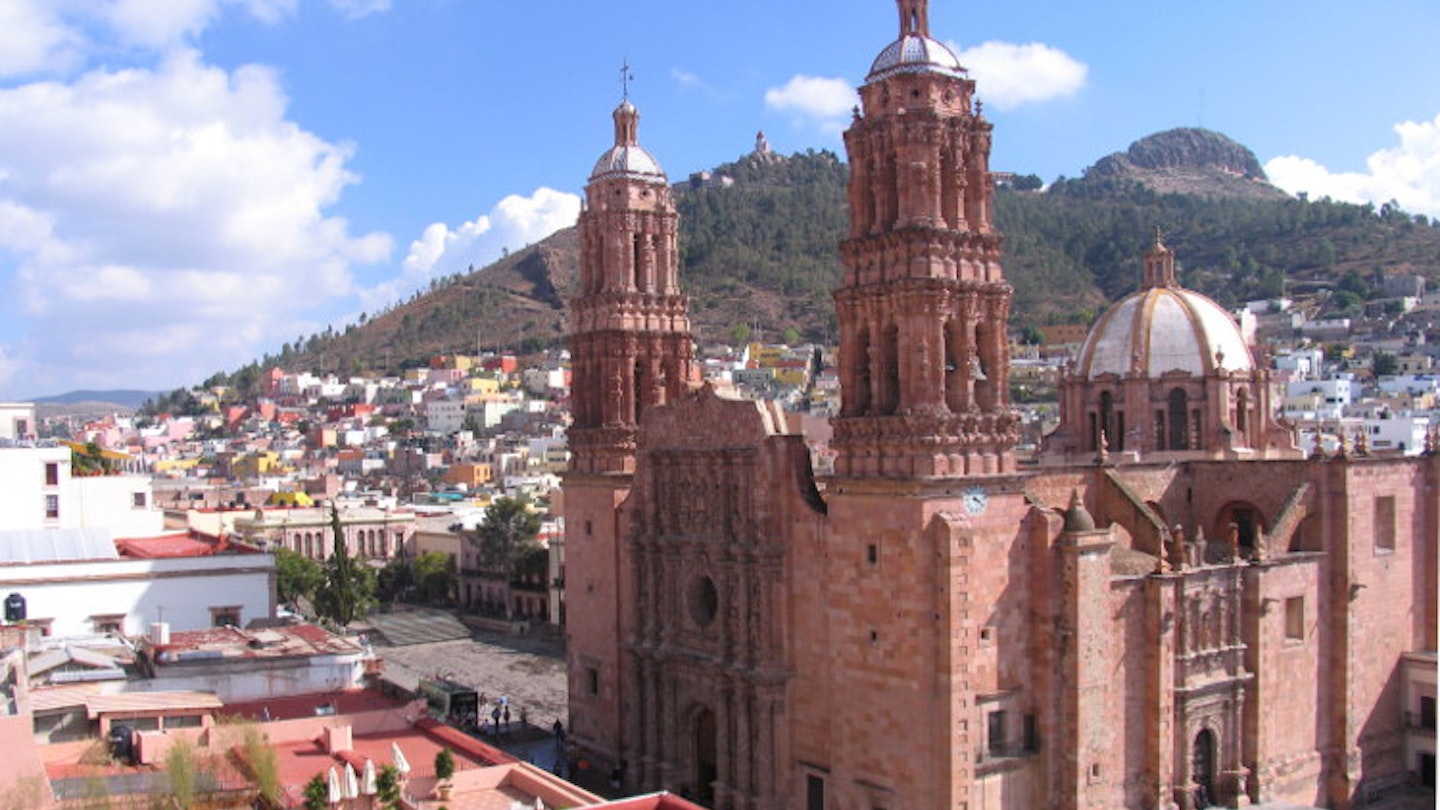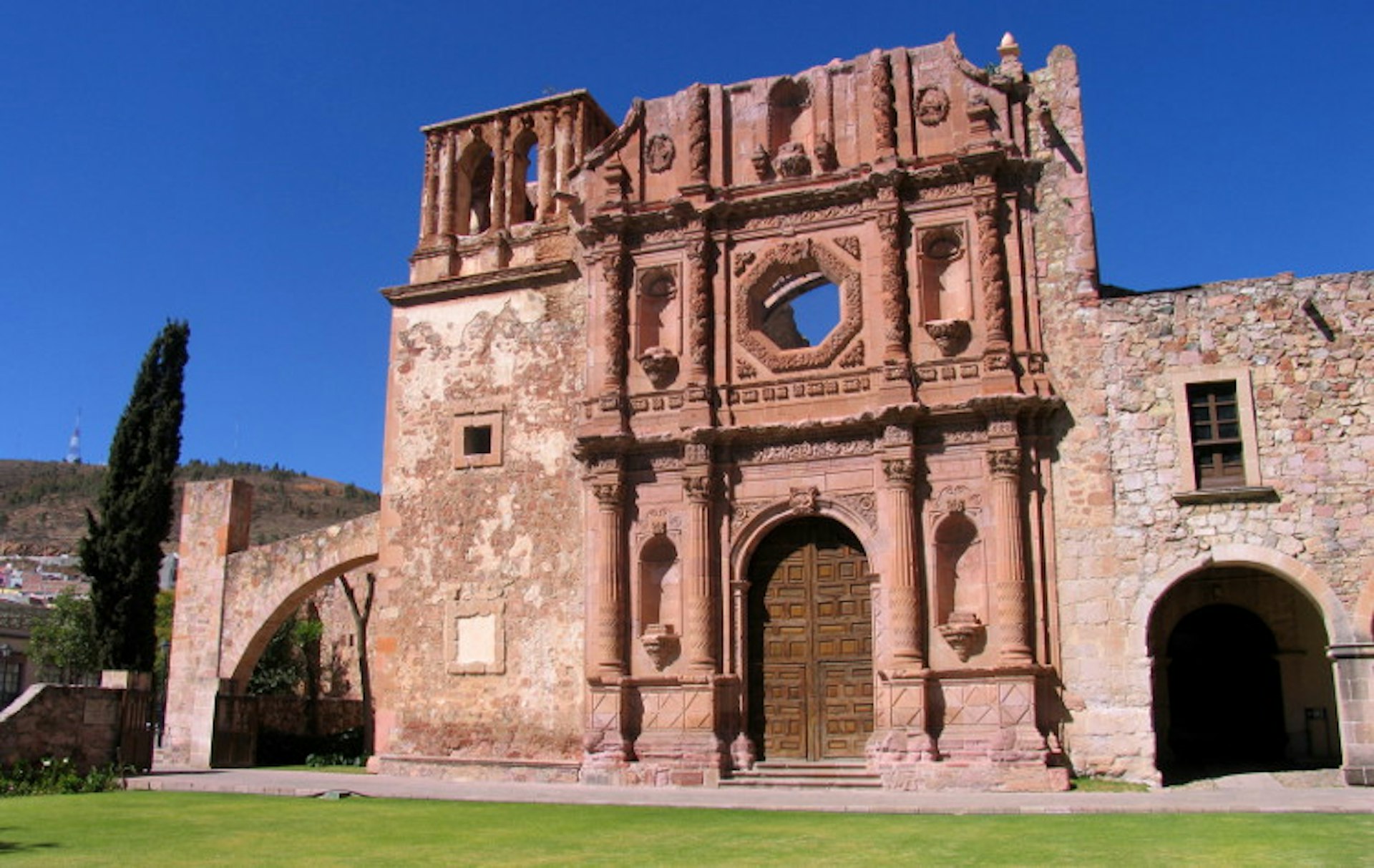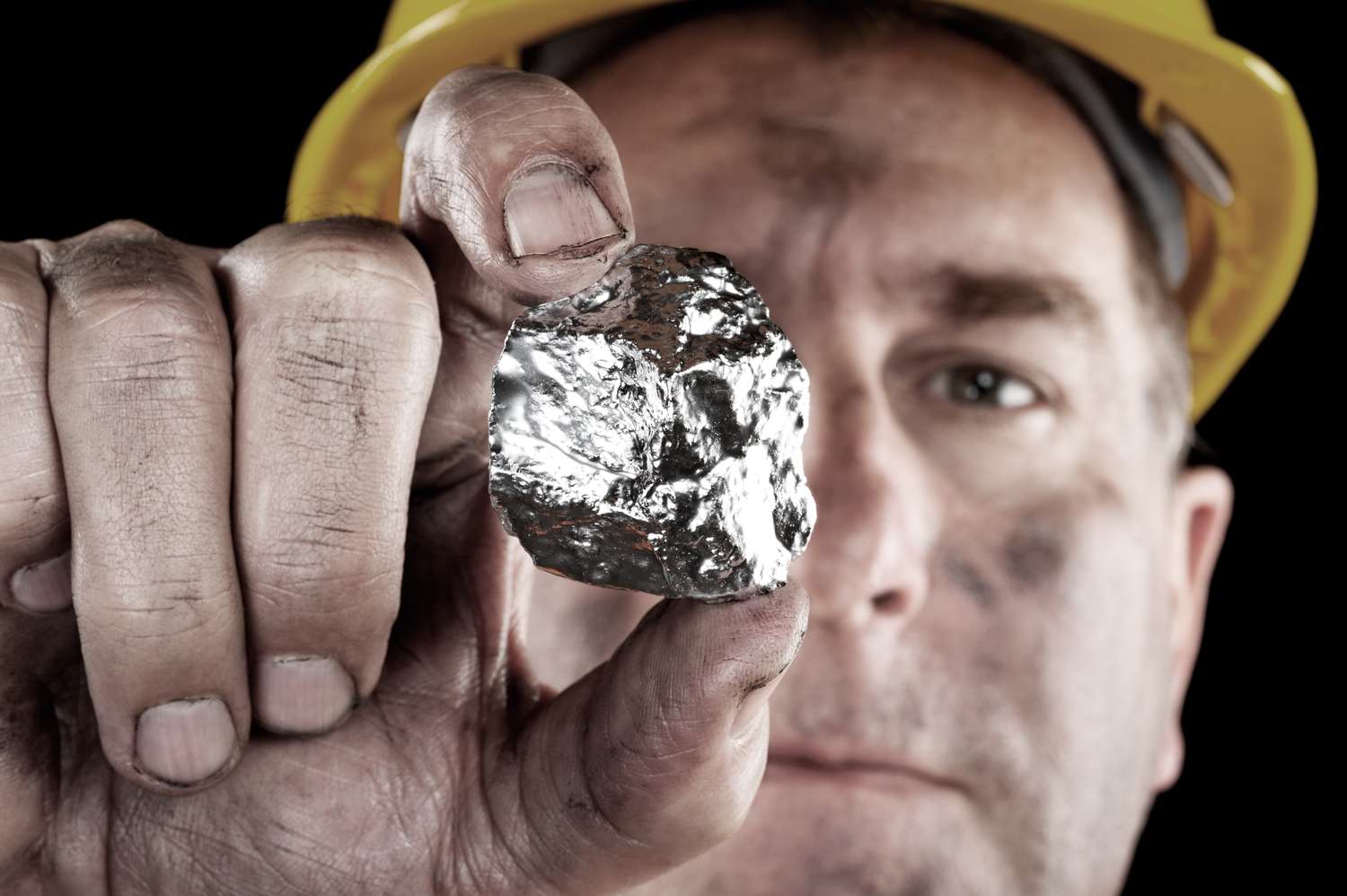Have you ever wondered about the rich history behind Mexico’s silver mines? I mean, we all know about Mexico’s beautiful beaches and delicious cuisine, but there’s so much more to this country than meets the eye. Well, get ready to be blown away because today we’re diving into the fascinating story of Mexico’s silver mines.
From the colonial era to the present day, Mexico’s silver mines have played a significant role in shaping the country’s history and economy. These mines have attracted explorers, adventurers, and treasure-seekers for centuries, and it’s easy to see why. The abundance of silver in Mexico’s soil has made it one of the largest silver-producing countries in the world.
But it’s not just about the silver itself. The stories and legends that surround these mines are equally captivating. Tales of bravery, tragedy, and supernatural occurrences have been passed down from generation to generation, making a journey through Mexico’s silver mines not only an educational experience but also a thrilling one. In our upcoming article, we’ll delve deeper into the history of these mines, explore the impact they had on Mexico’s development, and even introduce you to some of the most famous mines that you can visit today.
So, if you’re ready to embark on a fascinating journey through history, stay tuned! We’ll take you on a virtual trip to Mexico’s silver mines and reveal why they are an essential part of the country’s cultural heritage.

Exploring Mexico’s Silver Mines: A Fascinating Journey Through History
Silver has played a significant role in Mexican history, shaping its culture, economy, and even its landscapes. Mexico is known for its rich silver mining heritage, with numerous silver mines spanning centuries of extraction. In this article, we will delve into the ancient beginnings of Mexican silver mining, the challenges faced by miners, the modernization of the industry, and the cultural significance of silver in Mexican folklore and traditions. Join us on this captivating journey through Mexico’s silver mines and discover the enduring legacy they leave behind.
The Ancient Beginnings of Mexican Silver Mining
The Pre-Columbian Era: Early Silver Extraction Techniques
Long before the arrival of the Spanish conquistadors, the indigenous peoples of Mexico were already skilled in the art of silver extraction. Pre-Columbian civilizations such as the Aztecs and the Maya developed sophisticated mining techniques to extract silver from the earth. These early methods included simple mining tools, such as picks and shovels, as well as more advanced techniques like underground mining and smelting. The silver extracted during this era was utilized for various purposes, including jewelry, ceremonial artifacts, and trade with neighboring civilizations.
The Influence of Spanish Conquistadors on Mexican Silver Mining
The arrival of Spanish conquistadors in the 16th century marked a turning point in Mexican silver mining. The Spanish were drawn to the abundant silver deposits found in Mexico’s mountains and quickly began large-scale mining operations. Under Spanish rule, silver mining became a crucial industry for the colony, with major deposits discovered in regions such as Zacatecas, Guanajuato, and Taxco. The influx of Spanish settlers and enslaved indigenous laborers contributed to the development of mining towns and the establishment of a silver-driven economy.

The Colonial Era: Boom and Bust
The Discovery of Major Silver Deposits in Zacatecas
Zacatecas, located in central Mexico, became one of the most important silver mining regions during the colonial era. In 1546, the discovery of the “Rica de Plata” (Rich Silver Vein) in Zacatecas sparked a silver rush that attracted miners from all over New Spain. The abundance of silver in the region led to the establishment of numerous mines, turning Zacatecas into a thriving mining center. The wealth generated from these mines played a pivotal role in the Spanish Empire’s economy, fueling its expansion and dominance for centuries.
The Rise of Mexican Silver Mining Towns
As silver mining expanded throughout Mexico, vibrant mining towns emerged, each with its own unique cultural heritage. These towns, such as Guanajuato, Real de Catorce, and Taxco, became hubs of economic activity and cultural exchange. The architecture of these towns reflects the wealth and prosperity brought by silver mining, with grand churches, ornate colonial buildings, and charming cobblestone streets. Today, these mining towns have not only preserved their historical charm but have also transformed into popular tourist destinations, showcasing Mexico’s silver mining heritage.
Life in the Mines: Struggles and Challenges
The Harsh Working Conditions for Mexican Miners
Life in the silver mines was far from glamorous. Mexican miners faced numerous hardships and dangers as they toiled underground. The confined spaces, lack of ventilation, and constant threat of cave-ins posed significant risks to the miners’ safety. Additionally, exposure to toxic substances, such as mercury used in the extraction process, led to serious health issues. The backbreaking labor and long hours further added to the struggles faced by these brave individuals who dedicated their lives to extracting silver from the depths of the earth.
The Impact of Silver Mining on Indigenous Communities
The arrival of the Spanish conquistadors and the establishment of silver mining operations had a profound impact on indigenous communities in Mexico. Forced labor, exploitation, and displacement became common occurrences as thousands of indigenous people were subjected to harsh working conditions in the mines. The extraction of silver also led to environmental degradation, affecting the natural resources relied upon by these communities. The enduring legacy of silver mining on indigenous communities underscores the complex social and cultural dynamics that have shaped Mexico’s history.

Innovation and Modernization in Mexican Silver Mining
Technological Advances in Silver Extraction
As the demand for silver grew, so did the need for more efficient extraction methods. Technological advancements played a crucial role in improving the silver mining industry in Mexico. During the late 18th and early 19th centuries, new techniques such as the patio process and the introduction of mercury amalgamation revolutionized silver extraction. These methods allowed for higher yields and increased profitability. The incorporation of modern machinery and the use of advanced drilling techniques further propelled the industry forward, making Mexican silver mining more productive and lucrative.
The Introduction of Industrialization in Mexican Mines
The advent of the Industrial Revolution in the 19th century brought industrialization to Mexican silver mines. Steam-powered machinery and advanced smelting techniques transformed the industry, enabling more efficient extraction and processing of silver ore. The increased accessibility to railways and the development of infrastructure further facilitated the transportation of silver from remote mining regions to international markets. Industrialization not only boosted production but also led to the emergence of mining conglomerates and foreign investors, shaping the economic landscape of Mexico.
Silver Mines as Tourist Attractions
Exploring the UNESCO World Heritage Sites of Mexican Silver Mines
Mexico’s silver mines not only hold historical and cultural significance but also attract tourists from around the world. Several silver mining sites in Mexico have been recognized as UNESCO World Heritage Sites, including the Historic Center of Zacatecas, Pátzcuaro, and Guanajuato. These sites offer visitors a glimpse into the rich history of silver mining through well-preserved colonial architecture, interactive museums, and guided tours of former mines. This blend of history, culture, and natural beauty allows visitors to immerse themselves in the fascinating world of Mexican silver mining.
Visiting Famous Silver Mines in Mexico
Travelers curious to experience Mexico’s silver mining heritage firsthand can visit famous silver mines, such as La Valenciana in Guanajuato or Mina Dos Estrellas in Real de Catorce. These mines offer guided tours that take visitors deep into the underground tunnels, showcasing the harsh conditions and the process of extracting silver. Visitors can also witness the mesmerizing sight of silver veins running through the rock formations, truly appreciating the geological marvels that have made Mexico a silver-rich country. These immersive experiences provide a unique opportunity to witness the essence of Mexican silver mining up close.

The Economic Importance of Mexican Silver Mines
The Contribution of Silver Mining to the Mexican Economy
Throughout history, silver mining has been a vital contributor to Mexico’s economy. The abundance of silver resources has allowed Mexico to become one of the world’s largest producers of silver. The revenue generated from silver mining has supported various sectors, including infrastructure development, job creation, and social programs. The economic significance of silver has extended beyond the mining industry, with the value of silver exports contributing to Mexico’s overall trade balance and international competitiveness.
Silver Production and Global Market Trends
Mexico’s status as a leading silver producer has shaped global market trends. The country consistently ranks among the top silver-producing nations, accounting for a significant portion of the world’s annual silver supply. The fluctuations in silver prices, driven by factors such as global economic conditions and industrial demand, have a direct impact on Mexico’s silver mining industry. As the world becomes increasingly reliant on silver for various applications, Mexico continues to play a crucial role in meeting this demand.
Environmental Impact of Mexican Silver Mining
The Ecological Consequences of Silver Extraction in Mexico
Silver mining, like any extractive industry, has had adverse effects on the environment. The extraction process involves the use of toxic chemicals, the clearing of vegetation, and the disruption of ecosystems. The release of heavy metals and high concentrations of pollutants into soil and water sources further exacerbate these environmental consequences. Efforts to minimize the ecological impact of silver mining are crucial to ensure the sustainable development of the industry and the preservation of Mexico’s natural resources.
Sustainable Practices and Environmental Regulations
Recognizing the need for responsible mining practices, Mexico has implemented environmental regulations and guidelines to mitigate the impact of silver extraction. These regulations govern the management of waste, the reclamation of mining sites, and the protection of water sources. Furthermore, the adoption of sustainable technologies and practices, such as water recycling and energy-efficient processes, is becoming increasingly common within the industry. By prioritizing sustainability, Mexico aims to balance the economic benefits of silver mining with the preservation of its natural environment for future generations.
The Cultural Significance of Mexican Silver
Silver Jewelry and Artifacts in Mexican Culture
Silver has long held cultural significance in Mexico, with its use in jewelry and artifacts dating back centuries. Mexican artisans have mastered the art of silver craftsmanship, producing intricate and beautiful pieces that reflect the country’s diverse cultural heritage. From the iconic silver filigree jewelry of Oaxaca to the Taxco silverware known for its elegance and craftsmanship, Mexican silver jewelry is renowned around the world. These artistic creations serve as expressions of Mexican culture and contribute to the vibrancy of traditional Mexican attire and customs.
The Symbolism of Silver in Mexican Folklore and Traditions
Silver occupies a prominent place in Mexican folklore and traditions. It is often associated with purity, wealth, and protection against evil spirits. Silver amulets, such as the popular Milagros (small metal charms), are believed to bring good luck and provide spiritual protection. In certain festivals and ceremonies, silver objects are used as offerings to deities or as symbols of prosperity. The symbolism of silver in Mexican folklore intertwines the spiritual and material aspects of Mexican culture, further highlighting the significance of silver in the country’s collective consciousness.
Legends and Tales from Mexican Silver Mines
Stories of Treasure and Ghosts in Mexican Silver Mines
Mexico’s silver mines have given rise to numerous legends and tales, adding an air of mystique and intrigue to their already captivating history. Tales of lost treasures waiting to be discovered in the abandoned tunnels of old mines have captured the imaginations of treasure hunters and adventurers alike. Additionally, stories of ghostly apparitions haunting the depths of the silver mines have been passed down through generations. These legends not only add a sense of wonder to the already fascinating world of silver mining but also contribute to the allure of Mexico’s silver mines as cultural landmarks.
The Mystique Surrounding Lost Silver Mines
Mexican silver mines hold a certain allure due to the mystery surrounding lost mines. Over the years, several silver mines have been abandoned or lost, their locations becoming the stuff of legend. The tales of these lost mines have become part of Mexico’s folklore, inspiring countless expeditions and treasure hunts. While some treasure hunters have claimed to uncover long-lost riches, many lost mines remain elusive, adding to the enigma and fascination surrounding Mexico’s silver mining history.
Challenges and Future of Mexican Silver Mining
The Depletion of Silver Reserves and the Search for New Deposits
As with any finite resource, the depletion of silver reserves poses a significant challenge for the future of Mexican silver mining. After centuries of intensive extraction, some once-rich mines are nearing exhaustion. To sustain the industry, efforts are underway to discover new deposits and implement efficient exploration techniques. The search for untapped silver reserves requires advanced geological surveys and investments in research and development. Successfully overcoming these challenges is crucial to ensure the continued economic and cultural contributions of silver mining in Mexico.
Emerging Technologies and Innovations
The future of Mexican silver mining lies in embracing emerging technologies and innovations within the industry. Developments in mining automation, artificial intelligence, and sustainable practices can enhance both safety and productivity. Advanced geological mapping and geophysical survey techniques can aid in the identification of new silver deposits. Furthermore, the adoption of environmentally friendly extraction methods and renewable energy sources can help minimize the ecological footprint of silver mining. By embracing these advancements, Mexico can ensure the long-term viability of its silver mining industry.
Preserving Mexico’s Silver Mining Heritage
Efforts to Preserve Historical Silver Mining Sites
Recognizing the cultural and historical value of Mexico’s silver mining heritage, efforts have been made to preserve important historical sites and mining structures. Government agencies, non-profit organizations, and mining companies are collaborating to conserve and restore mining sites of historical significance. These conservation efforts involve structural stabilization, documentation of historical artifacts, and the interpretation of mining history through educational programs and exhibits. By preserving these sites, Mexico aims to safeguard its silver mining heritage and create opportunities for cultural tourism and education.
Promoting Cultural Tourism and Education
The promotion of cultural tourism and education is vital for maintaining the legacy of Mexican silver mining. Museums, mining heritage centers, and interactive exhibits offer visitors a chance to engage with the fascinating history and culture surrounding silver mining. Educational programs and workshops allow students and researchers to delve deeper into the scientific and historical aspects of the industry. Through these initiatives, Mexico aims to create awareness and appreciation for its silver mining heritage, ensuring that future generations understand its cultural, historical, and economic significance.
Silver Mining in the 21st Century
The Evolving Role of Silver in the Global Economy
In the 21st century, the role of silver continues to evolve in the global economy. Apart from its traditional uses in jewelry and silverware, silver has gained importance in various industrial sectors, including electronics, solar energy, and medical applications. As technology advances and new applications for silver emerge, the demand for this precious metal is expected to rise. Mexico’s substantial silver reserves position the country to play a crucial role in meeting this growing demand and capitalizing on the economic opportunities presented by the evolving silver market.
Impacts of Technological Advancements on the Industry
Technological advancements are reshaping the silver mining industry, making it safer, more efficient, and environmentally friendly. Robotics, automation, and remote sensing technologies are increasingly being utilized in underground mining operations to improve worker safety and increase productivity. Innovative mining methods, such as in-situ leaching and bioleaching, have the potential to reduce the environmental impact of silver extraction. These advancements not only optimize the economic value of silver mining but also pave the way for sustainable practices that align with Mexico’s commitment to responsible resource management.
Conclusion
Mexico’s silver mining heritage is a testament to the country’s rich history, cultural diversity, and economic significance. From its ancient beginnings in the Pre-Columbian era to the challenges and innovations of the modern world, silver mining in Mexico has left an indelible mark on the country’s landscape and identity. As technology advances and sustainability becomes increasingly important, the future of Mexican silver mining presents both challenges and opportunities. By preserving its silver mining heritage, embracing technological advancements, and fostering cultural understanding, Mexico can ensure that the legacy of its silver mines remains an enduring source of fascination for generations to come.
